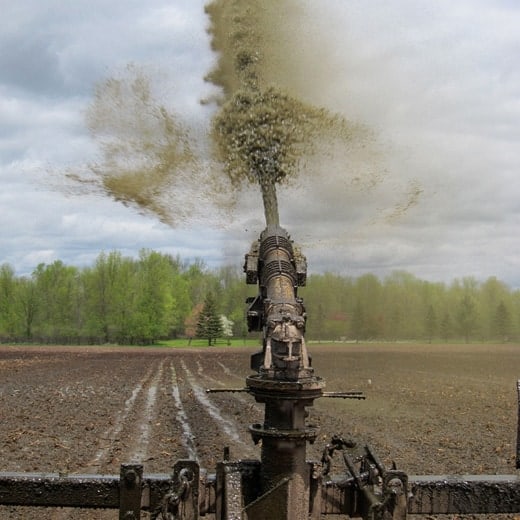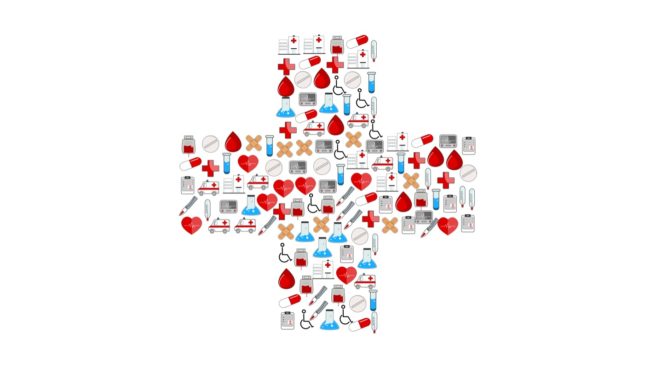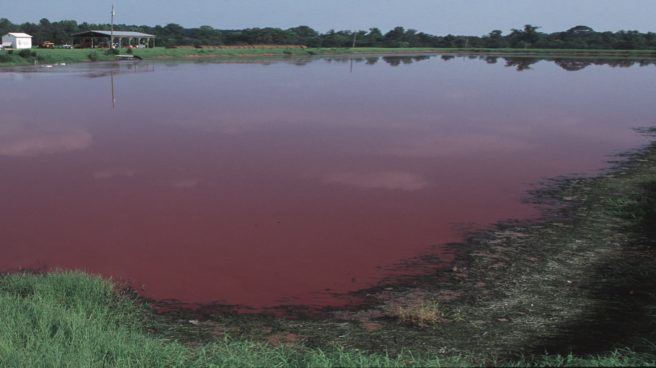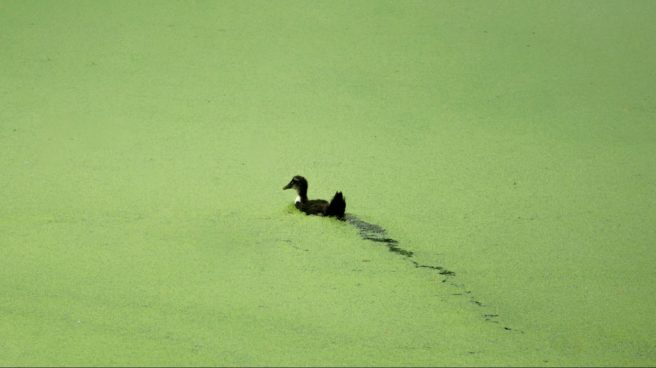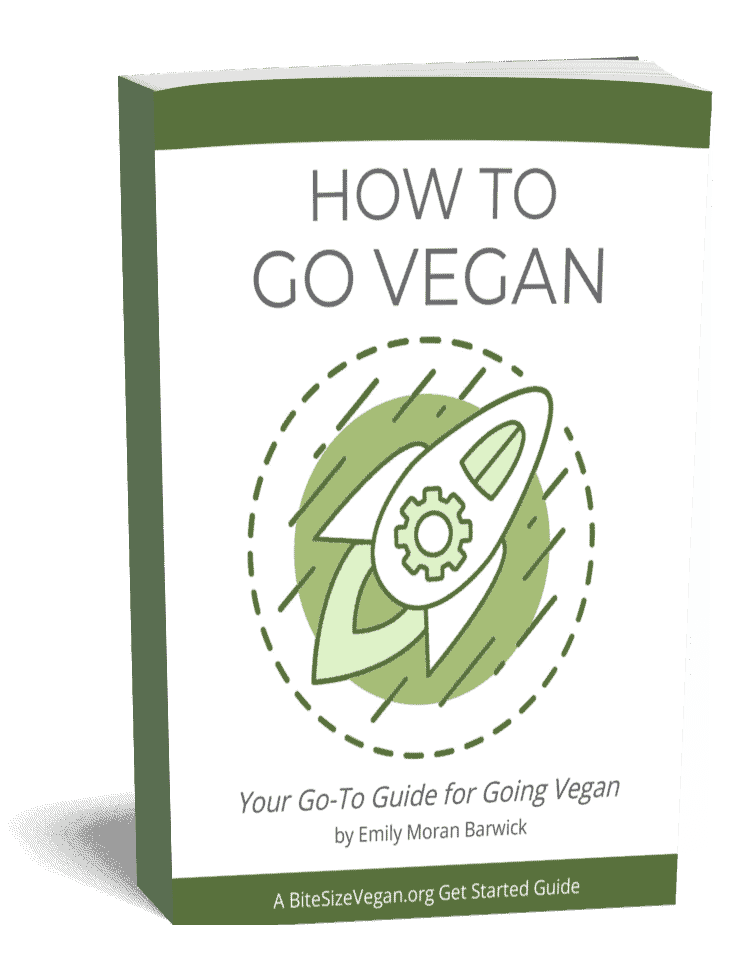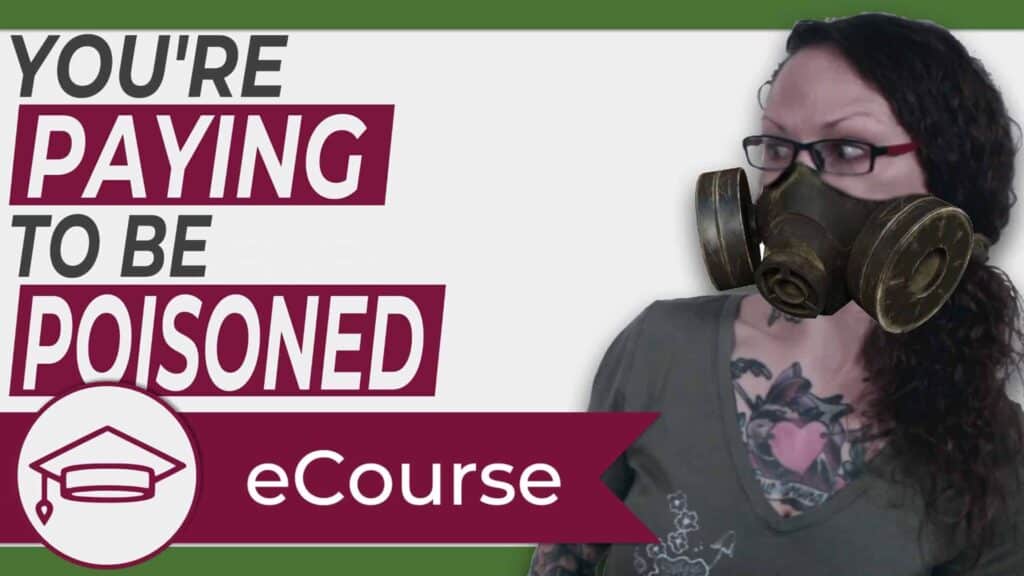
Welcome
This eCourse is designed to help you integrate the information in the post “The Public Health Crisis of Animal Waste – Our Global Poo Problem.”
Learn how the extreme excrement production of farmed animals directly affects your health, goes largely unregulated, and how you’re actually paying for the “privilege” of being poisoned.
Course Video & Article
These days, there are plenty of public health crises to worry about. But one in particular has been piling up (literally) at at an alarming rate: our planet has a poop problem. With global poo production approaching five billion tons of feces being dropped on our earth every year, and the vast majority of that load going completely untreated by any sanitation system, this is one public health crisis we should all give a crap about.
While I may be laying the bathroom language on thicker than farmland fertilized with literal fecal fountains—we’ll get to it—the health risks of farmed animal waste is no laughing matter.
In this article, you’ll learn how the extreme excrement production of farmed animals directly affects your health, goes largely unregulated, and how you’re actually paying for the “privilege” of being poisoned.
From waste seeping into our groundwater and shutting down entire cities, to fecal particles in the air inducing respiratory illnesses, to zoonotic disease outbreaks running rampant, sit back and prepare yourself—cause I’m about to drop a massive load…of knowledge.
How Much Poop Do Farmed Animals Make?
Before we dive into the impact of animal waste on public health, let’s learn just how much poop farmed animals make. Scientists estimate that by 2030, the planet will be producing nearly five billion tons of feces.1
Farmed animals produce over 130 times more total waste than humans, all of which goes entirely untreated and largely unregulated.
tweet this
Not only is our overall poop production increasing at an alarming rate of 114.6 billion additional pounds a year (52 billion kg), but so is the ratio of animal to human excrement.2 Farmed animals produce anywhere from five to twenty times the amount of feces as humans,3 and over 130 times the amount of total waste,4 meaning the vast majority goes entirely untreated and largely unregulated.5
To make matters worse, animal waste is 100 times more concentrated than raw human sewage6 and more than 500 times more concentrated than treated human sewage.7
A single dairy farm with 2,500 cows produces the same amount of waste as a city of 411,000 people.8 A single pig produces roughly 1.5 tons of manure every year.9 With regards to chickens, in a perfect illustration of the absolute absurdity of our sewage situation, a report by Food and Water watch found that the average egg-laying operation in the United States produces ten Olympic swimming pools’ worth of manure every year.10 (Olympic swimming pools contain about 500,000 gallons of water.)11 In my home state of Iowa alone, laying hens top off almost two Olympic pools of poo every single day.12
What to Do With All the Poo?
Speaking of swimming pools of poo, this liquid animal waste is stored in vast open ponds called lagoons. These lakes of waste contain a toxic mixture of:
- excrement,
- growth hormones,
- antibiotics,
- chemicals,
- animal blood,
- silage leachate,
- heavy metals,
- antibiotic residues, and even
- animal carcasses.13
When lagoons reach their limits, some farms literally launch the liquid straight up into the air in glorious fecal fountains that put Las Vegas to shame, and showers local residents with aerosolized toxins.14
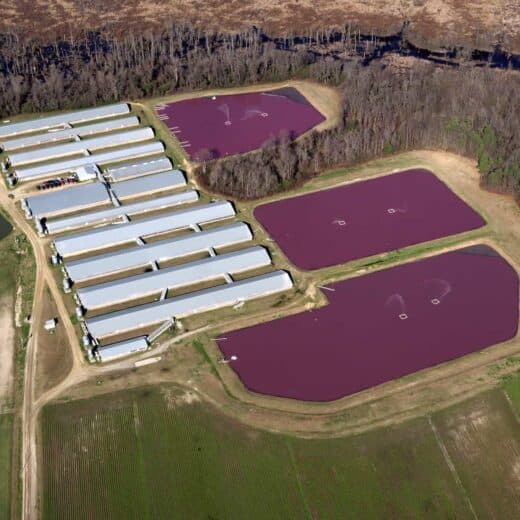
There is simply too much waste produced to be effectively used as fertilizer. The liquid slurry that is applied to fields is more than the land can absorb, resulting in toxic runoff. Leaking lagoon walls, overflow from storms, and improper drainage results in contamination of both groundwater and surface water.15 It’s obvious our current waste management practices are not effective. Our planet simply cannot keep up with the ever-increasing output.
The Public Health Impact of Animal Waste
If all of this is starting to sound grim, strap in, cause I’m about to guide you through what our woeful waste management means for your health. The health risks from animal waste range in severity from headaches16 to death.17 Associated conditions include, but are not limited to:
- respiratory illnesses18—including increased rates of childhood asthma;19
- gastrointestinal illnesses;20
- stomach and esophageal cancers;21
- neuropsychiatric abnormalities, such as impaired balance or memory;22
- blue baby syndrome possibly leading to infant death;23
- birth defects and miscarriages;24
- immune suppression;25
- mental health problems,26 like anxiety, depression, and PTSD;27
- and death.28
While the brunt of these conditions are born by farm workers and surrounding communities, the impact of animal agriculture upon our global health and environment is at a crisis point. The fallout from animal waste reaches far beyond the farms, polluting our air and poisoning our water.
Air Pollution from Animal Waste
Aside from the obvious overpowering odor issue, air emissions from waste in lagoons, fertilized fields, and—of course—outright fecal fountains, include: ammonia, nitrous oxide, hydrogen sulfide, methane, and particulate matter.29
These harmful gasses come with a range of health risks, and not just to the respiratory system. Breathing in these toxic fumes is also linked to cardiovascular ailments, central nervous system issues, immune suppression, and—once again—premature death.30 Additionally, as children take in 20–50% more air than adults, they are most severely affected.31
Water Pollution from Animal Waste
Now you may be thinking “I don’t live downwind from one of these facilities, so I’m in the clear, right?” Sorry to burst your poo-protected bubble, but if there’s one thing we all need and share, it’s our planet’s water.
Animal agriculture is the “leading contributor of pollutants to lakes, rivers, and reservoirs.”32 Farmed animal waste contaminates groundwater—which much of the world’s population relies on for drinking water—with viruses, bacteria, and nitrates.33
Nitrate poisoning can have devastating consequences for fetuses and infants, causing birth defects, blue baby syndrome, and even death.34 It’s also linked to stomach and esophageal cancers.35 Groundwater is much harder to monitor than surface water, and contamination risks linger long after a farm has closed and drained its lagoons.36
One of the most significant consequences of animal waste in our waterways is the creation of dead zones and toxic algae blooms. These areas are starved for oxygen, killing off plant and animal life while providing a perfect breeding ground for bacteria and neurotoxins.37 While the resulting rich green water may look lovely, it poses serious risks to public health.
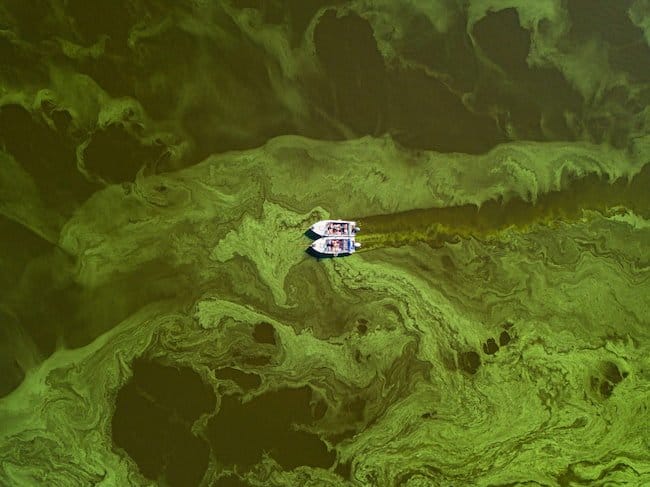
In 2014, Lake Erie made national headlines when the annual algae bloom38 poisoned the drinking water of close to half a million people in and around Toledo, Ohio, causing a three-day shutdown of the area’s water system.39 A fisherman who’d been out on Lake Erie was hospitalized after contact with the algae attacked his immune system, covering him in hives and shutting down his body’s ability to sweat.40 In 2017, Florida declared a state of emergency when a toxic algae bloom spread to the beaches.41
If you’re outside of the United States and thinking, “well, we always knew the US was full of it,” just take a sobering step down from your perceived poo-problem-free position. In China, where animal protein production has risen almost five-fold within three decades,42 more than half of all lakes are polluted from animal waste.43
Even Ireland—often idealized for its rolling green fields of happily grazing cows—is facing a water pollution crisis, largely due to their dairy industry.44 In the last four decades, Ireland’s “number of pristine rivers has fallen from 575…to an all-time low of just 20.”45 You can learn much more about how even the ideal animal agriculture is a total crap show in my speech “The Best We Have to Offer,” delivered in Dublin, Ireland.
While United States is the only country I’m aware of that literally created an official competition for dealing with its crap, no matter what country you call home, farmed animals are everywhere, and every one of them poops.46
Zoonotic Diseases & Foodborne Illnesses
If you’re not convinced that we’re really up the proverbial creek without a paddle, animal waste contamination leads to the spread of zoonotic diseases and foodborne illnesses. Zoonotic diseases, or zoonoses, are infectious diseases that can spread from non-human animals to humans.47 These include, but are not limited to:
- pathogenic E. Coli,
- listeria monocytogenes,
- salmonella,
- cryptosporidium parvum,
- giardia lamblia,
- leptospira,
- campylobacter,
- and brucella.48
Zoonotic diseases can be transmitted through water and food contaminated with animal waste. While you often hear about E. Coli outbreaks in lettuce and other produce, don’t blame the vegetables—it’s the feces at fault.
The pathogens in animal poo have been responsible for untold human epidemics around the world, resulting in hospitalizations and deaths.49 According to the Centers for Disease Control and Prevention,
“scientists estimate that more than 6 out of every 10 known infectious diseases in people can be spread from animals, and 3 out of every 4 new or emerging infectious diseases in people come from animals.”50
Lack of Effective Regulation
You may be wondering, “if animal waste is so dangerous, where the heck are the regulations?” While many countries do have regulations for air and water pollution, enforcement for farms is generally somewhere between ineffective and completely absent.51 Despite being illegal in these countries, dumping waste directly into waterways is unfortunately commonplace around the world.52
In the United States, farmers are largely exempt from most environmental laws.53 In the United Kingdom, a 2017 report from The Bureau of Investigative Journalism found 3,700 incidents of farm-related pollution in a six-year period, 424 of which were deemed “serious pollution incidents” directly linked to dairy, poultry and pig farms.54
You Are Paying to Be Poisoned
Perhaps the most absurdly offensive aspect of this global poo problem is that you are paying farmers to poison you. Despite continual devastation of the environment, direct threats to public health, and outright violations, farms continue to receive millions of taxpayer-funded subsidies.55
Despite continual devastation of the environment, direct threats to public health, and outright violations, farms continue to receive millions of taxpayer-funded subsidies.
tweet this
Let’s take a look at some examples. Remember the annual algae bloom of Lake Erie that poisoned Toledo’s drinking water? An extensive report by the Sierra Club Michigan Chapter found that the Western Lake Erie Watershed area alone received $17 million in subsidies over a seven-year period, while producing 630 million gallons of waste annually.56
In the most extreme example of tax-funded pollution, the report highlighted Hartland Farms. of Lenawee County, Michigan. That single farm, “received more than $1.5 million in federal funding between 1995 and 2014 while in repeated violation of its permit. In fact, it has been under a court order since 2003, yet has continued to receive hundreds of thousands of dollars in Environmental Quality Incentives Program and other subsidies in that time.”57
Similarly, in the United Kingdom, The Bureau of Investigative Journalism found that “farms linked to serious pollution incidents or poor environmental management…received millions of pounds in government subsidies… In some cases offenders received substantial payments – in one instance more than £1m – over the two year period.”58 Even repeat offenders continue to receive substantial subsidies.59
What’s the Solution to Our Crap Situation?
If this massive dump of defecation data has you distressed, you may be wondering: “how we can possibly dig ourselves out?” The only real solution is a planetary shift away from eating animals. We simply cannot effectively manage the ever-increasing amount of waste farmed animals produce.
This isn’t about pushing veganism—it’s a matter of our collective survival. It’s a matter of our planet’s future. Of our children’s future. This is a global public health crisis that will only continue to get worse unless we stop eating animals.
I hope this article has been helpful. Please spread it far and wide with the fury of the fecal fountains themselves—really just launch it out there to shower the world…with knowledge. I’d love to hear your thoughts on our crap conundrum in the comments. And don’t forget to take the free eCourse!
To stay in the loop about new Bite Size Vegan content and updates, please subscribe, or follow the Telegram channel for the most reliable notifications. To support more quality crap like this, please see the support page. Now go live vegan, and I’ll see you soon.
— Emily Moran Barwick
RELATED POSTS:
Open the accordion above to view the course video and article. Then take the quiz to test your knowledge of the information covered! You may take the quiz an unlimited amount of times. Passing score: 80%
NOTE: I’ve recently re-worked the eCourses so that you no longer have to register to take the quiz! As this is a big change, if you find any technical issues with taking the quiz, please do let me know by reporting it here (opens in new tab). Thank you!
"*" indicates required fields


